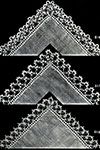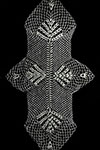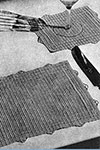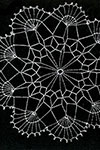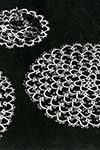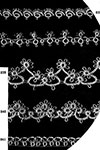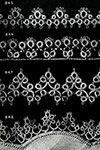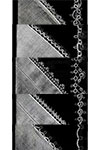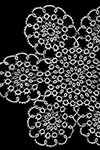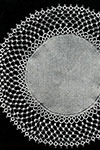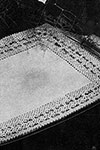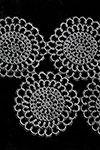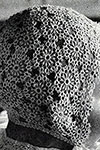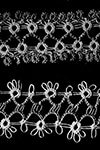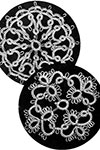Newly Added Crochet Patterns
- Formal Garden Runner Pattern #N-110
- Cobble-Stones Chair Set Pattern #C-105
- Flower Frame Runner Pattern #N-111
- Flower Doilies | Book #64 | American Thread Company
- Motif Doily Pattern #4-63
- Luncheon Set Pattern #4-81
- Curtains Pattern #4-68
- New Pansy Doily Pattern #6409
- African Violet Ruffle Doily Pattern #6408
- Pond Lily Doily Pattern #6407
- Irish Rose Doily Pattern #6406
- Wild Rose Luncheon Set Pattern #6405
The Book of Tatting | Book No. 39 | The Spool Cotton Company
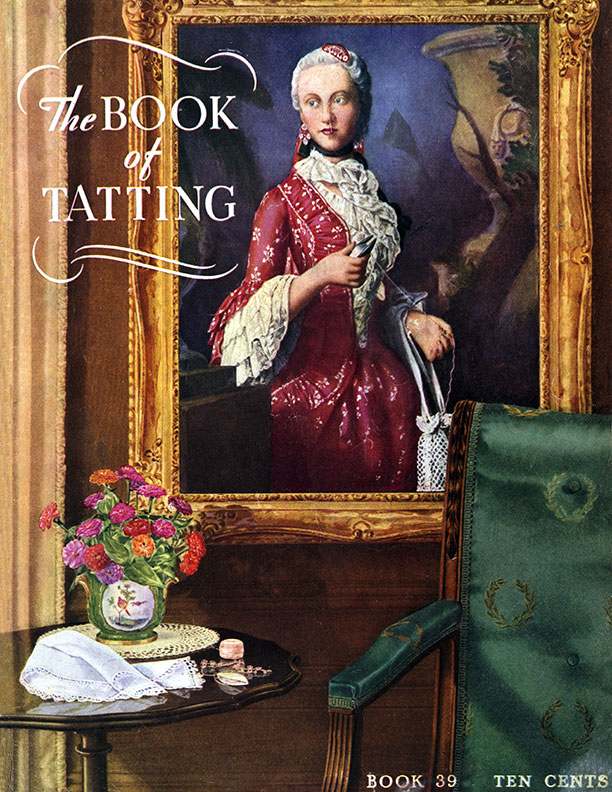
The Book of Tatting
Book No. 39
The Spool Cotton Company
Original Copyright 1935
THE modern stream-lined tatting shuttle has a proud ancestry. Elaborate shuttles of the 18th and 19th centuries are displayed in various museums here and abroad. Some are of rock crystal mounted in gold and set with jewels … others are mother-of-pearl or of gold and red lacquer … and some are embossed with romantic little figures in enamel. A shuttle used by the daughter of Louis XV was made of wrought steel with a monogram in flowers.
Tatting, too, has been elaborated by using gold thread with designs enriched with jewels. A Queen of Roumania made an altar veil of silk with pearls tatted into the design, and for the children of the royal family she made exquisite coverlets—some entirely of tatting, others with dainty motifs appliquéd on net.
An early poetical reference to tatting is found in Sir Charles Sedley's "The Royal Knotter," written in 1707, in which appears—
"For here’s a Queen now thanks to God!
Who when she rides in coach abroad,
Is always knotting threads."
Tatting is glorified in the world of art in several portraits by old masters. One of these—painted by Rotari in 1742—is reproduced on the cover. The portrait is of Kunigunde, daughter of Augustus III, Elector of Saxony and King of Poland. In one hand she holds a large tatting shuttle.
The name Tatting is believed by some to have originated from the Indian word tattie—a mat it resembles. An old Icelandic word taeta, meaning to knot, may have been the inspiration—or it may be from the old provincial English word tat, meaning to entangle or weave. In Eastern countries it is called makouk, named from the shuttle with which it is made.












